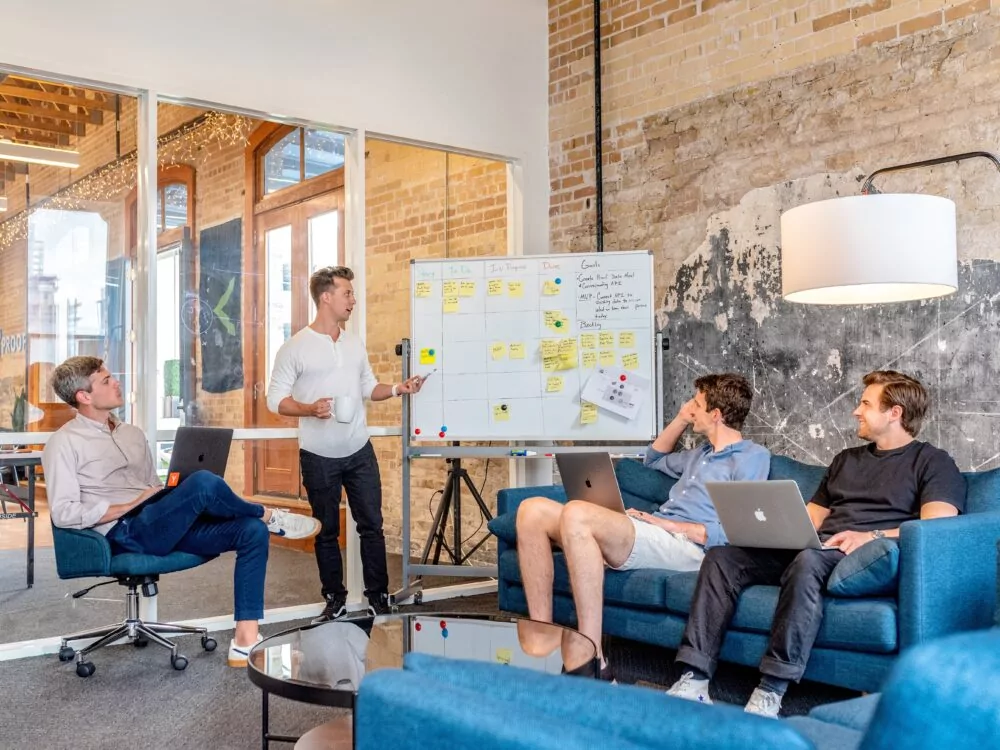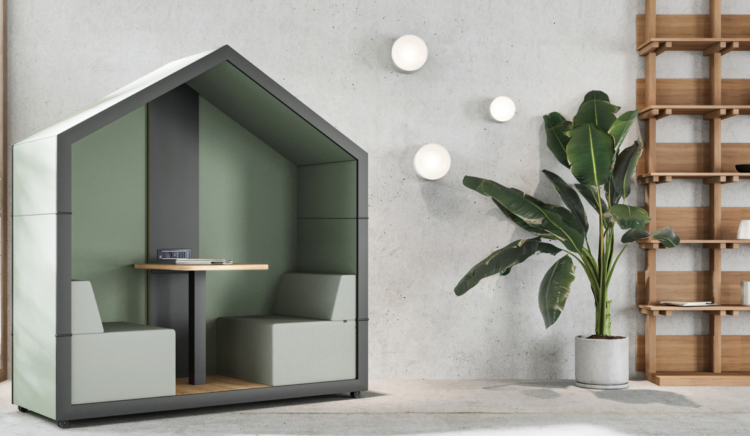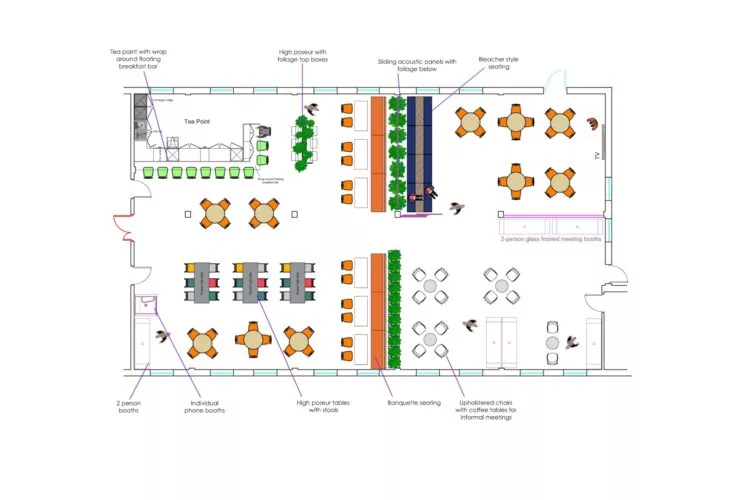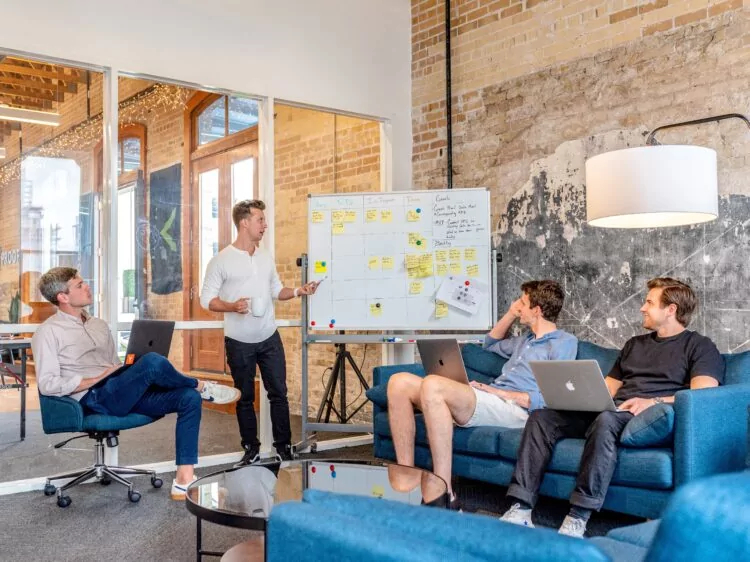 Add My Company
Add My Company
Design for Neurodiversity: a Workplace Guide

What is Neurodiversity?
Neurodiversity is the idea that everyone’s brain works in a different way. As each person has unique personality traits and interacts with the world differently, advocates of neurodiversity believe there is no “correct” way of thinking, learning, or behaving.
While the term neurodiversity applies to everyone, many use it in the context of less typical neurotypes, such as people with ADHD, dyslexia, and autism (often referred to as neurominorities). Both neurominorities and neurotypicals have talents and things they struggle with. For some, however, the difference between those strengths and weaknesses is more pronounced.
To demonstrate our points in this blog, we often refer to some of the common strengths and challenges of neurominorities and neurotypical employees. It’s also important to keep in mind that no two brains are the same, with variations in the way people experience the world around them.
How to Create a Workspace That Supports Neurodiversity
With the knowledge that there is no “standard” brain, fast-moving businesses are recognising the limitations of a one-size-fits-all approach to office design. Indeed, we have seen a big shift towards a human-oriented workplace, where employees are given more choice over how and where they want to work.
While offering choice is one part of creating an inclusive office space, it’s also important to be aware of distinct challenges neurominorities face. For example, most people on the autism spectrum experience some form of sensory sensitivity, so businesses must take this into account when creating an inclusive space.
With these aspects in mind, businesses should aim to create a workspace that caters to individual needs without shining a spotlight on differences. To understand what this might look like, here are some ideas:
Limit Distractions
For many employees, concentrating is one of the big challenges of office life. As such, both neurotypical and neurodivergent employees will benefit from workspace modifications to help them focus. Consider the following:
- Quiet Zones – Everyone has different sensitivity levels when it comes to noise, so a smart solution for businesses is to offer areas that are quieter and more intimate. Ideal for tasks that require extended periods of deep focus, a quiet zone will typically be a low traffic area or even a private office with strong acoustic properties.
- Good Lighting – Too much sensory input can be overwhelming for people with autism, so limit overly harsh office lighting in at least some areas of the office design. Flickering lights and bright fluorescent bulbs can be particularly disruptive, so keep an eye out for them. Conversely, natural light controlled by blinds is suitable for everybody, and lights with dimmer switches are ideal for when the nights start to draw in.
- Modest Décor – Bright colours and irritating patterns can also be annoying for autistic people, so scan everything from the office furniture upholstery to wall art and carpet tiles. To create a more calming environment, use soft colours and low contrast patterns.
By taking steps to limit distractions, employers can help neurodivergent and neurotypical employees be more productive in the office. This can lead to a number of benefits for both the employees and the employer.
Related blog: Are You Doing Enough to Facilitate Deep Work?
Image credit: Max Furniture
Don’t Restrict Movement
For employees who fidget, it can be counter-productive to allocate them a single, fixed workstation. Rather, it’s better to let them move around to release frenetic energy. Here are some ideas:
- Sit Stand Desks and Active Seating – As some people find it difficult to work in a fixed position long period of time, it’s a good idea to offer a range of office furniture solutions. For example, people with ADHD may prefer to work at a sit-stand desk because it won’t restrict movement (people with back trouble will appreciate this too). You could also introduce active furniture, such as balance stools, sit-stand chairs and deskbikes.
- Enticing Breakout Spaces – While this may sound counter intuitive, providing a breakout space encourages employees to leave their desks, take time out and pause for a moment. This is especially beneficial for some neurodivergent people, who may need a place to recharge and recompose themselves if they are feeling overwhelmed.
- Strong Space Planning – Prioritise a clean layout that is easy to navigate for all employees. To do so, ensure there is ample space between work zones, reduce unnecessary clutter, and install easy to understand wayfinding signage.
Overall, there are many reasons why it is best not to restrict the movement of people in offices. By allowing everyone to move around as they need to, you can help them to focus, be productive, and regulate their emotions.
Support Collaboration and Mentoring
It’s important to create a team-centric environment within your office space where all employees can thrive. For some, this will mean providing spaces where they can get stuck into team collaboration and creative brainstorming sessions. For others, it will mean facilitating one-on-one support for mentoring and time management.
To cater to everyone, consider making some zones open and others more private. An open area may be specifically designed for teams, with workstations arranged in close proximity, ad-hoc meeting tables and whiteboards for brainstorming. A workspace setup like this will foster a hive of activity, with colleagues regularly collaborating to develop new ideas.
By contrast, a private area will be quieter and more suitable for one-on-one meetings. In quiet areas, mentors can offer guidance and deliver instructions in an enclosed area away from distractions. Office pods are an ideal addition to quiet areas, as employees can also use them for training, collaboration in smaller groups, or independent work.
Thank You for Reading!
Workplace design for neurodiversity is an important consideration for any business that wants to create a welcoming and inclusive environment for your employees. By taking the time to understand the strengths and challenges of all employees and making accommodations where possible, businesses can create a more equitable and productive workplace for everyone.
Are You Making Changes to Your Office Space?
If you’re looking for a fit out company that can help you create a productive, inclusive and comfortable work environment for all employees, then Rap Interiors can help. We have a team of experienced professionals who will work with you to understand your needs and create a tailored office design solution that meets your unique requirements.
To get the ball rolling with your project, please call 0333 600 1234 or fill out the enquiry form below.
For more information on Design for Neurodiversity: a Workplace Guide talk to Rap Interiors




